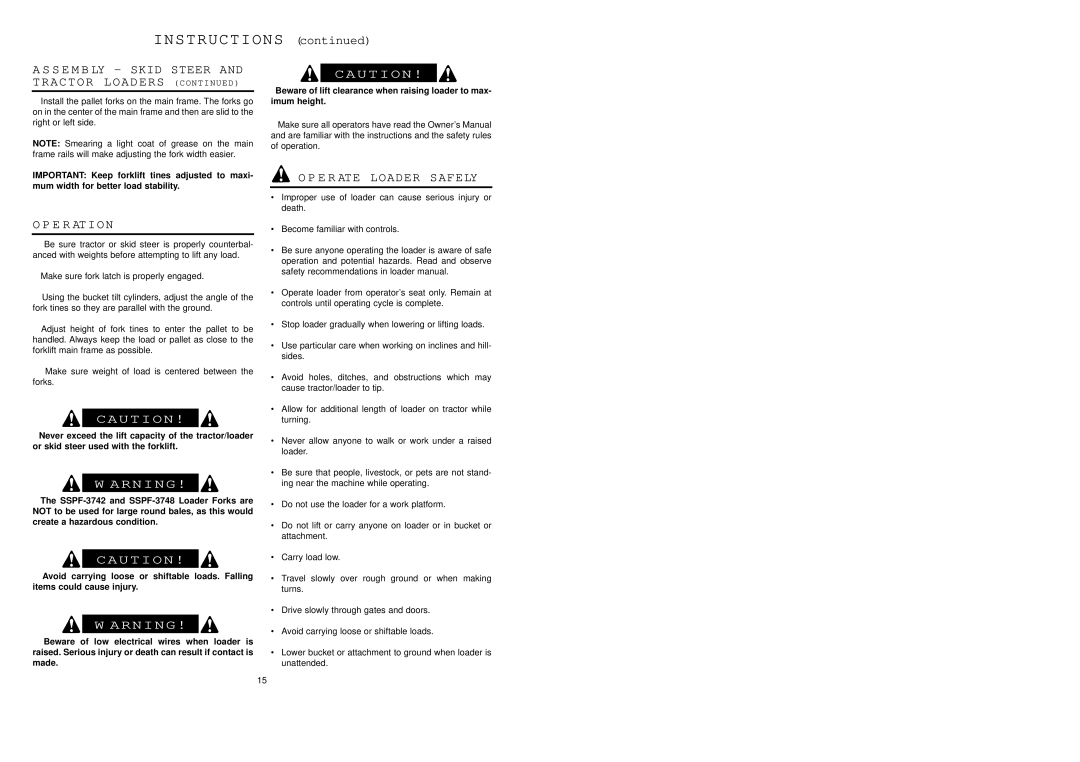
INSTRUCTIONS (continued)
A S S E M B LY – SKID STEER AND TRACTOR LOADERS (CONTINUED)
Install the pallet forks on the main frame. The forks go on in the center of the main frame and then are slid to the right or left side.
NOTE: Smearing a light coat of grease on the main frame rails will make adjusting the fork width easier.
IMPORTANT: Keep forklift tines adjusted to maxi- mum width for better load stability.
CAUTION!
Beware of lift clearance when raising loader to max- imum height.
Make sure all operators have read the Owner’s Manual and are familiar with the instructions and the safety rules of operation.
O P E R ATE LOADER SAFELY
•Improper use of loader can cause serious injury or death.
O P E R AT I O N
Be sure tractor or skid steer is properly counterbal- anced with weights before attempting to lift any load.
Make sure fork latch is properly engaged.
Using the bucket tilt cylinders, adjust the angle of the fork tines so they are parallel with the ground.
Adjust height of fork tines to enter the pallet to be handled. Always keep the load or pallet as close to the forklift main frame as possible.
Make sure weight of load is centered between the forks.
CAUTION!
Never exceed the lift capacity of the tractor/loader or skid steer used with the forklift.
W ARNING!
The
CAUTION!
Avoid carrying loose or shiftable loads. Falling items could cause injury.
W ARNING!
Beware of low electrical wires when loader is raised. Serious injury or death can result if contact is made.
•Become familiar with controls.
•Be sure anyone operating the loader is aware of safe operation and potential hazards. Read and observe safety recommendations in loader manual.
•Operate loader from operator’s seat only. Remain at controls until operating cycle is complete.
•Stop loader gradually when lowering or lifting loads.
•Use particular care when working on inclines and hill- sides.
•Avoid holes, ditches, and obstructions which may cause tractor/loader to tip.
•Allow for additional length of loader on tractor while turning.
•Never allow anyone to walk or work under a raised loader.
•Be sure that people, livestock, or pets are not stand- ing near the machine while operating.
•Do not use the loader for a work platform.
•Do not lift or carry anyone on loader or in bucket or attachment.
•Carry load low.
•Travel slowly over rough ground or when making turns.
•Drive slowly through gates and doors.
•Avoid carrying loose or shiftable loads.
•Lower bucket or attachment to ground when loader is unattended.
15
